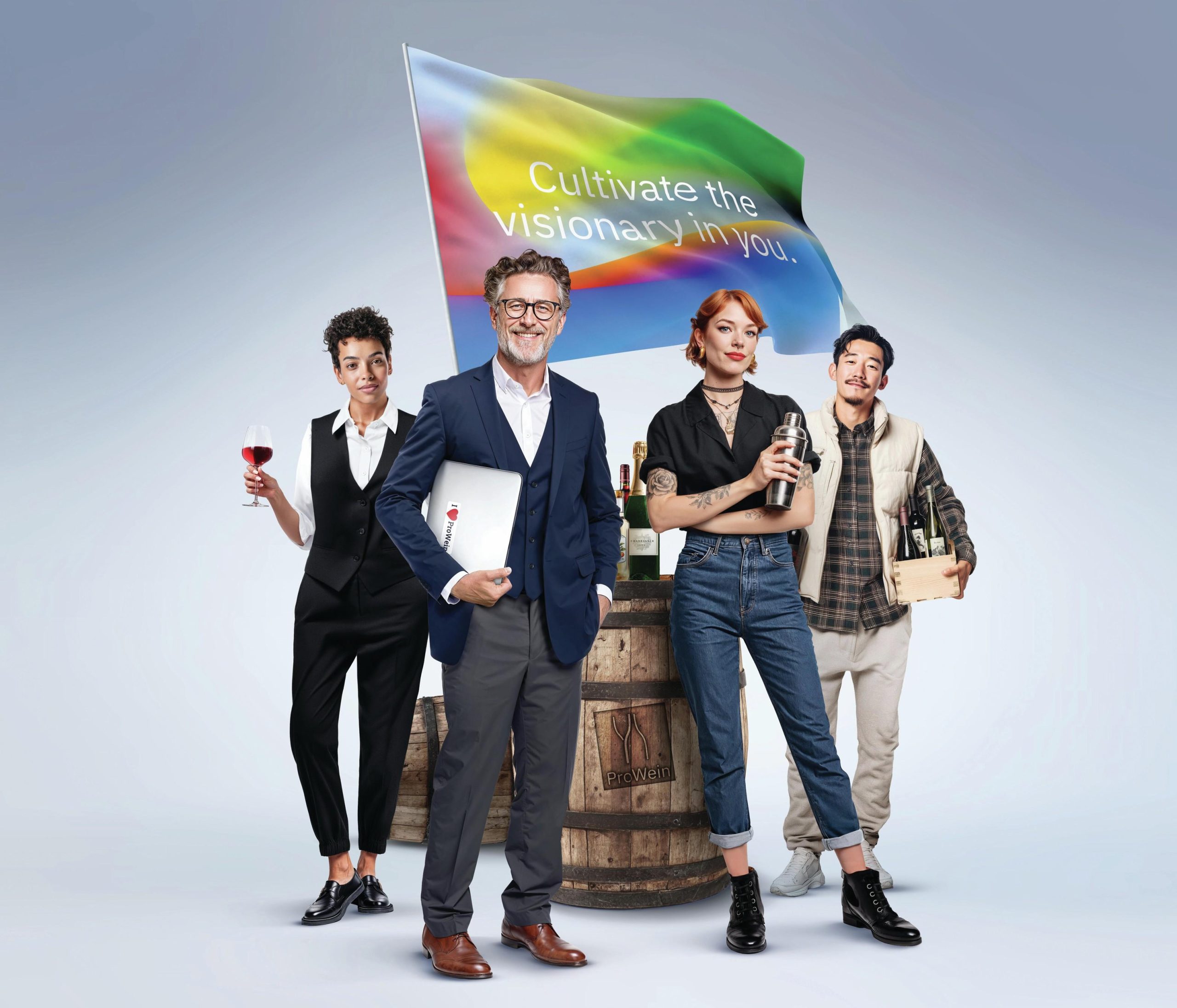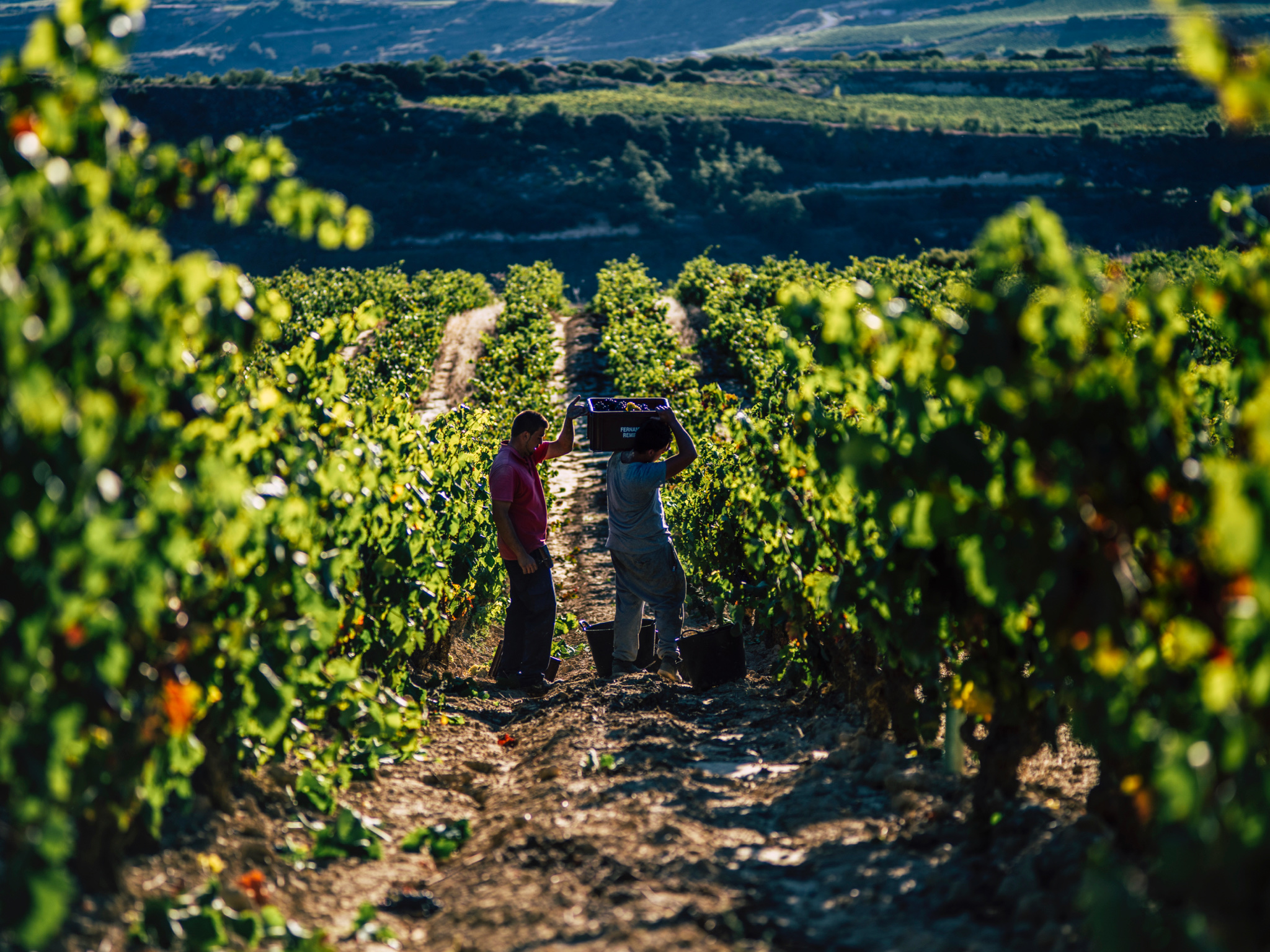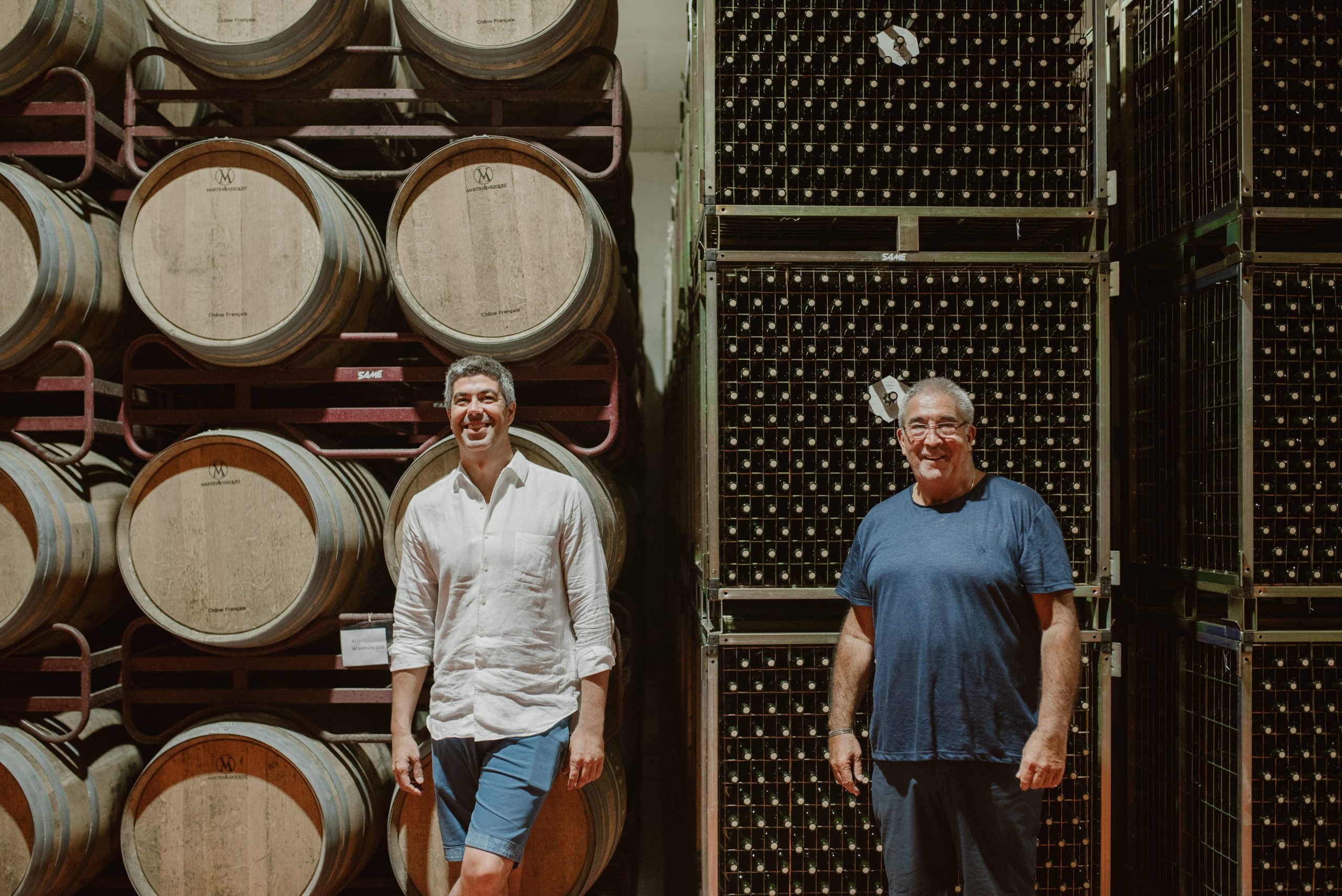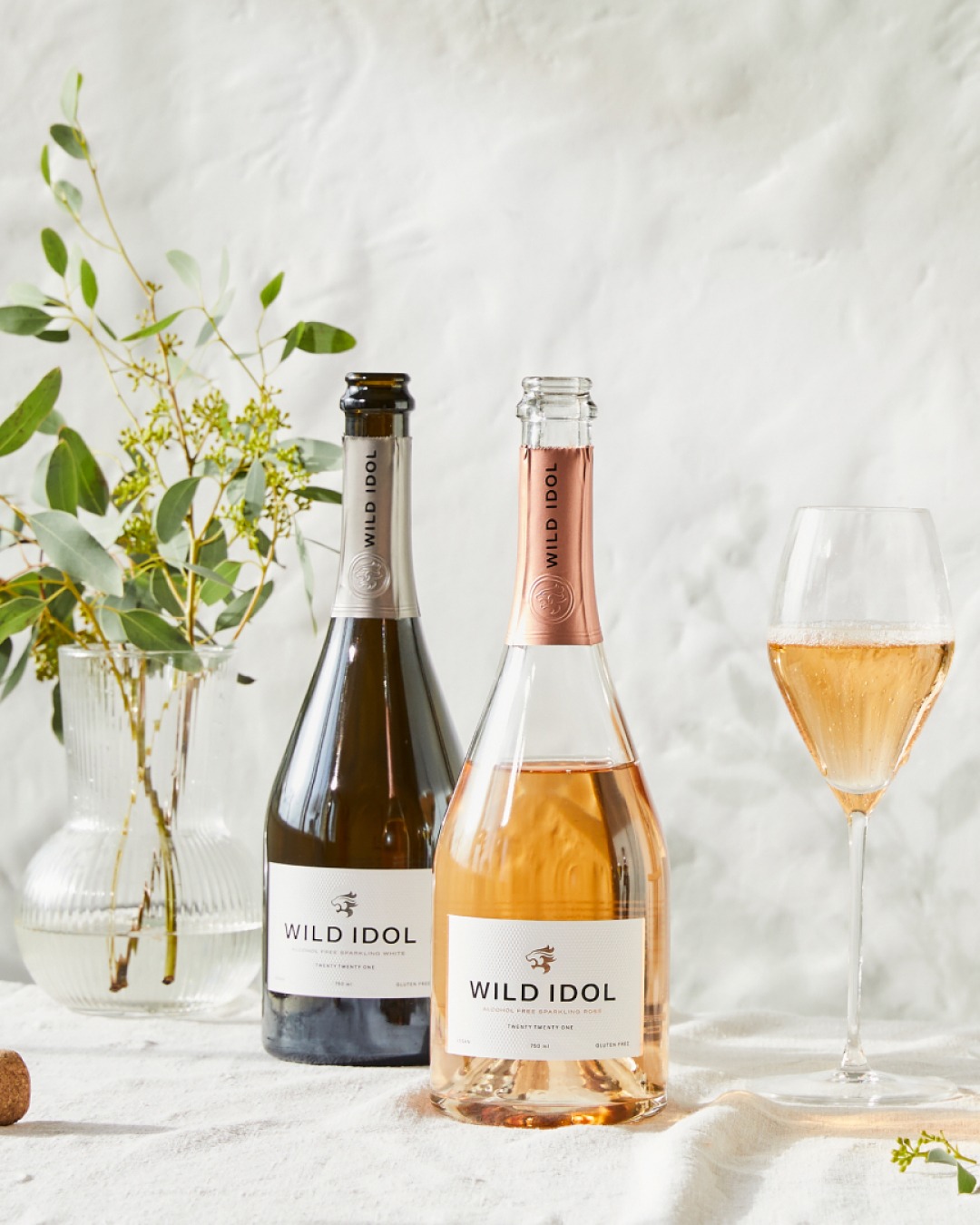10 food and drink trends that will shape the decade
From sober bars and communal kitchens to biodiverse dining, we’ve rounded up 10 food and drink trends predictions for 2020 from global trends forecaster Wunderman Thompson Intelligence’s Future 100 report, that are set to shape the way we eat and drink over the next decade.
Futureproof recipes
As pressure to reduce food waste continues to mount, climate-conscious consumers are opening up to new recipes that are not only healthy for themselves, but for the planet too. Future Food Today is a cookbook that aims to overhaul non-sustainable foods in today’s fridges and pantries, and offer wholesome, environmentally friendly options.
Released in May 2019 by Ikea’s research lab Space10 in collaboration with creative agency Barkas, the recipes introduce ingredients tailored for the future palate. From bug burgers containing mealworms to algae chips to microgreen popsicles, the future of food is served in a familiar form and made from unusual—but potentially planet-saving—ingredients.
“The aim is to inspire people to explore new delicious flavours and sustainable and healthy ingredients,” Simon Caspersen, cofounder of Space10, tells Wunderman Thompson Intelligence, “and to be a bit more curious and open-minded about food diversity.”
The research lab recognizes that dramatic changes need to be made to the way we consume and produce food. “In the next 35 years, our demand for food will increase by 70%, and we simply do not have the resources to achieve this demand on today’s diet,” says the lab. Innovative food brands are utilizing technology, science and food to tackle food’s impact on the environment, and consumers are readily embracing these options.
Take Impossible Foods’ Impossible Burger, the plant-based burger that “bleeds,” which is now widely available for sale at supermarkets and even on the menu at Burger King and White Castle.
Dairy Farmers of America reported that sales dropped by over $1 billion in 2018 compared to the previous year, while sales of dairy alternatives continue to grow. It appears that mainstream consumers are open to substituting unsustainable food and drinks with comparable or superior sustainable choices.
Why it’s interesting: Consumers are pivoting towards a “climate diet,” consuming less meat and dairy, and seeking environmentally friendly alternatives. Food brands will need to start producing healthy and sustainable foods that not only feed consumers but also nourish the planet.
Anti-Instagram interiors
The newest restaurants are turning away from the monotonously predictable design vernacular fetishized by social media. Lucky Cat restaurant in London, opened in June 2019, consciously avoids the colour-saturated, eye-catching aesthetic popularized on Instagram. In contrast to the vivid palettes, bold wallpapers and punchy light fixtures found in the countless trendy eateries just begging to be photographed, Lucky Cat’s deep colours and dim lighting create a shadowy atmosphere that isn’t meant to translate well on screen.
Design studio AfroditiKrassa “deliberately went dark” to discourage people from sharing images on Instagram. “We tried to work with materials and colours that are subtle and classic, not too shouty,” the studio’s founder, Afroditi Krassa, told Dezeen. “How many times do you visit a place because it looks great in a picture but disappoints in real life?”
Lucky Cat’s distinctive environment prioritizes the tactile over the visual, creating depth through texture rather than relying on attention-grabbing graphics. “There is relatively little contrast between colours, pattern and finish, yet a lot of richness in texture and tactility—Lucky Cat is a layered design that reveals more every time you visit,” Krassa explained.
The dark and sensual design at Marcus, the restaurant and bar at Montreal’s new Four Seasons hotel that opened in May 2019, similarly encourages in-situ enjoyment. The design is “deeply rooted in intimate interactions, singular moments, and glamor,” Atelier Zébulon Perron, the design studio behind the space, told Dezeen.
In spring 2019, architect Bernard Khoury redesigned Beirut’s B018, a nightclub in an underground bunker that has become an institution since it opened in 1998. Khoury has doused the interior in a monochromatic deep gray, with macabre design elements adding to the somber aesthetic.
Why it’s interesting: These designs signal the end of a ashy “look at me” era that canonized experiences and spaces crafted expressly for sharing on social media. Going forward, consumers will respond to spaces that encourage them to live in the moment, rather than experiencing the world through the lens of their phone.
Solving the surplus
Evolving efforts are trying to resolve the waste issue around food packaging and make it easier for consumers to make waste-free choices. New contenders are offering waste-free alternatives to everyday products and brand favourites, so consumers don’t have to change their habits.
In September 2019, Swedish food-waste app Karma expanded its partnership with household goods brand Electrolux, piloting the Karma smart refrigerator in Stockholm’s central underground station. Consumers can purchase discounted food on the Karma app and collect their items from the fridge, making it easier to pick up food on the journey home.
The pilot follows the 2018 launch of the smart fridge in Stockholm’s ICA Kvantum Liljeholmen supermarket, where shoppers can purchase surplus food items at a reduced price in store. Charlie Humphries, Karma’s UK marketing manager, tells Wunderman Thompson Intelligence that it’s changing the “small patterns in our behaviour that can make the difference.”
Loop, which launched in the United States in May 2019, allows consumers to purchase everyday grocery, personal care and household products in durable, re fillable packages. Shoppers pay a refundable one-time deposit to join the scheme, and Loop delivers the products to their door in a durable Loop Tote box. As products run out, users put the packages back in the Loop Tote. They then schedule a pickup and the packages go back to Loop to be cleaned and reused. An auto-refill option automatically adds favourite products to the next shopping list.
In Northern Ireland, the new Gander app recently partnered with Henderson Group, the parent company of a number of popular supermarkets, to help minimize waste in food stores. The app notifies local shoppers as soon as a food item’s price is reduced, giving them a heads-up to get to the store. The SpareEat app combats food waste in Israel by connecting users to restaurants, supermarkets and cafés so they can purchase surplus food. Both apps, which were launched in fall 2019, bene t consumer and retailer alike.
Why it’s interesting: By creating apps and platforms which utilize existing food and delivery systems, businesses are helping consumers to easily and conveniently adopt greener practices. Brands have a huge opportunity here to provide innovations, drive consumer momentum and support the move towards sustainable living.
Complex cocktails
The A-Z Cocktail, conceptualized by Bompas & Parr and available at W Hotel in Times Square during January 2019, boasts one ingredient for every letter of the alphabet. “It would be all too easy to randomly combine a minibar’s worth of ingredients and make something undrinkable. The challenge here was to create something beyond novelty for its own sake and end up with a balanced drink,” says Harry Parr, cofounder of Bompas & Parr and the cocktail’s creator.
The ingredient list includes eight types of rum, three types of cognac, one of mezcal, one of gin, six liqueurs and two types of bitters, as well as vermouth and other aperitif wines from around the globe. The objective? An unusual drinking experience—one that consumers would be hard-pressed to create at home. “The idea with mixing so many rums is to get a more intriguing flavour pro le than what you might be able to achieve with a simple serve,” says Parr.
The beverage program at upscale Mexican eatery Xixa in Brooklyn offers deconstructed takes on classic cocktails. These complex creations feature multi-ingredient ice cubes which are then dropped into the drinker’s liquor of choice. The Old Fashioned Cube, for example, freezes together 23 ingredients to recreate the spicy, citrusy, smoky essence of the cocktail. The ice cube is added to a couple of ounces of alcohol, and the flavour pro le evolves with each sip as the cube melts, for a progressive and unique drinking experience.
Why it’s interesting: With millennials and generation Z drinking less, it takes more for alcohol to grab their attention. Bars and restaurants are stepping up their game in response, leaning into sensational, compelling cocktails that pique drinkers’ interest and offer a unique experience that can’t be recreated at home.
Transportational interiors
Seeking an edge that goes beyond their menus, cafés and restaurants are conjuring up elaborate interiors that transport consumers to exotic locales. Now getting a cup of coffee can involve a walk through a Zen-like garden and ordering a cocktail can propel you to outer space.
At a Beijing shopping mall branch of Shanghai chain Seesaw Coffee, Nota Architects has created a stone path through lush foliage and mossy boulders, with cherry blossoms overhead and occasional puffs of white fog to add to the atmosphere. Wooden decks and benches ring the space, with the coffee bar theatrically positioned on a softly lit stage.
At Shanghai tea house Icha Chateau, design studio Spacemen hung 35,000 meters of shimmering, layered gold chains from the ceiling, evoking traditional Chinese tea terraces. The opulent interior underlines the rising design stakes in a city that also houses the largest Starbucks in the world, where coffee is described as theatre.
Tokyo also has its share of transportational interiors. Nikunotoriko serves Japanese-style barbecue, competing with countless other restaurants in the city. The difference here is that architect Ryoji Iedokoro has created a dining room in a cave, employing low lighting, walls of jagged rock and a translucent floor that resembles water underfoot.
Those wanting to be transported even further can head to Tokyo’s Bar Planetaria, owned by Konica Minolta, which constructs and operates planetarium theatre. The planetarium hosts regular drink and food evenings, where for a few hours, Tokyo denizens can kick back on a circular sofa and drink among the stars. From August to November 2019, the domed theatre offered views of the Hawaiian night sky.
A planetarium-like domed ceiling also features in upscale Copenhagen restaurant Alchemist. The domed area is one of several sections that diners experience on a visit that could last up to five hours. There might be images of jellyfish swimming among plastic bags overhead, to raise awareness of sea pollution, or a dark sky streaked with the northern lights.
Rasmus Munk, the chef and founder of Alchemist, told Food & Wine magazine the restaurant is designed to make you feel “as though you’ve left the outside world and arrived somewhere new.” Hence it may not, as its website warns, be ideal for business discussions or nervous first dates.
Why it’s interesting: Transportational interiors are emerging at a time when competition is heating up among cafés and restaurants. This is particularly true when it comes to capturing generation Z, which prizes experience and yearns for a story behind every cup of tea or coffee. These cafés and restaurants provide brief moments of escape from busy cities, without having to board a train, a plane—or a rocket ship.
Biodiverse dining
Partner Content
Chefs are cooking up biodiverse menus that cater to climate-conscious diners. The United States has lost 90% of native fruit and vegetable varieties since the 1900s. Today, just 12 plant sources and five animal sources make up 75% of the food we consume, according to the Food and Agriculture Organization of the United Nations, despite the fact that there are approximately 300,000 edible plant species globally. And just three crops—wheat, corn and rice —make up almost 60% of plant-based calories in most modern diets.
This reliance on a handful of species poses a serious threat to ecosystems and food security. Biodiversity is crucial for ensuring everything from human health to ecological stability to wildlife protection, as the World Wide Fund for Nature (WWF) attests. The wildlife conservation organization’s March 2019 “Future 50 Foods” campaign, in collaboration with Knorr, hopes to encourage people to diversify their diets in an e ort to protect endangered species.
The “Future 50 Foods” report includes a list of 50 plant-based ingredients consumers and chefs can incorporate into meals. “Diversified diets not only bene t human health but bene t the environment through diversified production systems that encourage wildlife and more sustainable use of resources,” explains Peter Gregory, research advisor at Crops For the Future, which contributed to the WWF campaign.
At Teranga, a West African eatery that opened in New York City in February 2019, chef and owner Pierre Thiam emphasizes ingredients that expand today’s limited diet. “By supporting underutilized crops in my menus, I contribute to saving our planet’s biodiversity,” Thiam told Forbes.com. “In the current context, designing a menu should be a conscious and responsible act.”
Teranga’s menu features ingredients like baobab, moringa and fonio, overlooked in the West, which are not only central to West African cuisine but also support biodiversity. Take the ancient grain fonio. “It’s a grain that’s great for the planet,” said Thiam. “It’s drought resistant; it grows in two months; it scores low on the glycemic index, so it’s great for your health too.”
Lou, which opened in Nashville last year, substitutes more conventional processed sugars with ingredients such as coconut sugar and buckwheat to achieve a more diverse diet. “By actively championing biodiversity inside and outside the kitchen, chefs can play a key role in creating interest in and a market for more diverse ingredients, helping to support farmers’ livelihoods, improve diets and strengthen our food systems,” Marie Haga, executive director of the Global Crop Diversity Trust, which supports crop diversity to protect global food security, told Forbes.
Why it’s interesting: As examples such as the recent surge in veganism and the sweeping renouncement of plastic straws illustrate, diners are shifting their eating habits to support environmental efdorts. Diversified diets offer another avenue for environmental activism—and a tastier meal.
Communal kitchens
Dense urbanization is creating a need for smarter use of spaces, while budding culinary entrepreneurs are looking for more cost-effective options when it comes to getting started in the business. Taking cues from the explosion of coworking o ces, co-cooking spaces are opening up around the world to cater to the growing desire for a place in which to not only innovate and network but also cook and socialize.
In July 2019, Samia Bingham, founder and CEO of culinary services start-up Flavours Culinary Group, won the Small Biz Challenge in Los Angeles, hosted by the UPS Store and Inc magazine.
The Maryland-based winner is using her prize money to launch Flavours, The Culinary Complex, a kitchen incubator where chefs and culinary specialists can innovate and network with other members of the culinary community. The hub is set to open in summer 2020.
WeWork launched WeWork Food Labs in spring 2019 in Manhattan, initially as a membership-based scheme. The WeWork Food Labs New York flagship and its first accelerator program both launched in October.
Menachem Katz, head of operations at WeWork Food Labs, tells Wunderman Thompson Intelligence, “WeWork Food Labs aims to empower innovators across the food and agricultural space, giving them the tools and resources they need to create sustainable solutions that address challenges both within our own community and on a global scale.” Accepted start-ups receive investment from WeWork, and access to industry experts, investors and VCs, as well as workshops and events, not to mention space in the R&D kitchen.
Mission Kitchen will open its first two London co-cooking facilities in 2020. These also offer mentorship opportunities, events and professional kitchens for their members. Co-cooking isn’t just for professionals, however. Communal kitchens are opening up in countries like Japan where apartment space is limited. Kitchen Studio Suiba in Tokyo was designed as a rental space where users can cook for each other, as well as a place where food and drinks businesses can interact with their customers.
Why it’s interesting: With space at a premium and costs for kitchen equipment prohibitive for many, co-cooking kitchens are a practical and sociable solution for home chefs and culinary specialists alike.
Sober bars
According to the World Health Organization, between 2000 and 2016 the number of drinkers in the world decreased by 5%. Accompanying this shift, consumers opting for teetotal lifestyles—or simply cutting down on booze— are looking beyond simple juices and soft drinks as alcohol alternatives, and are in search of new concoctions to satisfy elevated palates. As a result, restaurants and bars are creating teetotal environments, and curating non- alcoholic drinks menus.
Getaway opened in April 2019, providing a swanky social hang-out for Brooklyn tee-totalers. The menu boasts a list of sophisticated beverages, each containing a complex blend of flavours, including quirky ingredients such as pink peppercorn, juniper and fennel—without a single drop of alcohol on site.
In New York, Listen Bar has been creating teetotal buzz since it opened in October 2018. Proving it is possible to have a good night without alcohol, it hosts themed party nights once a month where visitors can enjoy an array of non-alcoholic cocktails and craft beers while taking part in activities such as karaoke, astrology readings, a sex-toy version of truth or dare and even live tattooing.
The Virgin Mary opened in Dublin in May 2019, claiming to be the first permanent alcohol-free bar in Ireland that follows standard pub opening times and contains all the traditional vibes of a regular pub. It offers carefully hand-crafted cocktails with additional twists, and even a brew that mimics the texture and appearance of Guinness, made with chilled nitro coffee served from a stout tap.
Choosing to focus on the health-conscious client, London’s Redemption bar serves nourishing booze-free alternatives, drawing on ingredients like activated charcoal, CBD cannabidiol extract in its lager, and kombucha on tap, all claiming a ream of health benefits.
For bars that want to delve into the teetotal space, non-alcoholic contenders like Seedlip are making it easier. Seedlip’s drinks, made using a variety of herbs and spices, provide an alternative to spirits in more than 300 Michelin-starred restaurants in 25 countries. Aecorn’s non-alcoholic aperitifs, made from Pinot Noir, Meunier and Chardonnay, are designed to be served as a spritz or mixed in a cocktail.
Why it’s interesting: As consumers shift towards healthier lifestyles, bars and drinks brands are catering to this shift without making clients feel that they are missing out on social experiences.
Regenerative farming
Intensive farming has so depleted the world’s soils that the United Nations has warned we could have just 60 harvests left. In response, some food brands are asking producers to transition to regenerative agriculture. This term covers a raft of techniques that restore soil quality, with the added benefit of sequestering carbon and reducing greenhouse gases, thus delivering a win win: food that’s better for the planet and for people.
In an interview with Pebblemagazine, Guy Singh-Watson, founder of the UK’s Riverford Organic Farmers, explained that “food grown in healthy soil is healthier. It’s better balanced nutritionally, with fewer toxins. If you’re growing your own food that’s the reason you want to get to grips with the soil near you. I’ve met farmers who won’t eat the produce that’s grown on their own farms.”
Danone is now leading a coalition of 19 major companies, including Nestlé, Unilever and Kellogg Company, to push for regenerative agriculture, aiming to reinvent our food system and restore diversity. According to the Food and Agriculture Organization of the United Nations, just nine plants account for two-thirds of the world’s crop production, a key factor in the depletion of soil quality.
General Mills has also announced a major commitment to regenerative agriculture, promising to adopt the techniques on a million acres of farmland in the United States by 2030. The company has also donated $650,000 to Kiss the Ground, a non-pro t organization that trains farmers to use soil health practices to make land more resilient. General Mills brand Annie’s Homegrown is also helping to raise awareness of soil health via its Soil Matters campaign, which has featured on limited-edition packs of products made with ingredients grown using regenerative practices.
The opportunity to combat climate change has led outdoor brand Patagonia to partner with Hopworks Urban Brewery in Oregon and launch its own Long Root beer brand. The beer is brewed with a trademarked novel grain called Kernza that removes more carbon from the atmosphere than other grains, requires less water and pesticides, and helps prevent soil erosion, thanks to those eponymous long roots.
Why it’s interesting: In the future, food brands that adopt regenerative agriculture practices can be a powerful force in the fight against climate change, combating greenhouse gases and restoring soil quality.
Butterfly pea flower
Chefs and mixologists on multiple continents are experimenting with the vibrant indigo and colour-changing properties of the butterfly pea flower. The flower—long used in Southeast Asian cakes and rice dishes—is now showing up around the globe, its popularity fuelled as much by its health benefits as by its distinctive colour.
Thirsty mag ran a piece in May 2019 featuring eight different blue pea flower cocktails served across the United States, from the Little Violeta at Geist in Nashville (other ingredients include gin, pineapple and aloe) to the Purple Rain at Madison on Park, San Diego (peach liqueur, lemon, egg white and a few drops of CBD oil). Food & Drink magazine featured three butter y pea flower drinks to make for summer 2019, using citric acid to turn the hue from blue to purple.
Butterfly pea flower is used to tinge lobster linguine at the Woodside Inn in Mumbai. In Australia, the Hunter Distillery makes a butterfly pea liqueur.
Why it’s interesting: Sustainability and climate concerns are driving innovation in the food and drink category—and fostering a newfound appreciation for previously overlooked ingredients.




